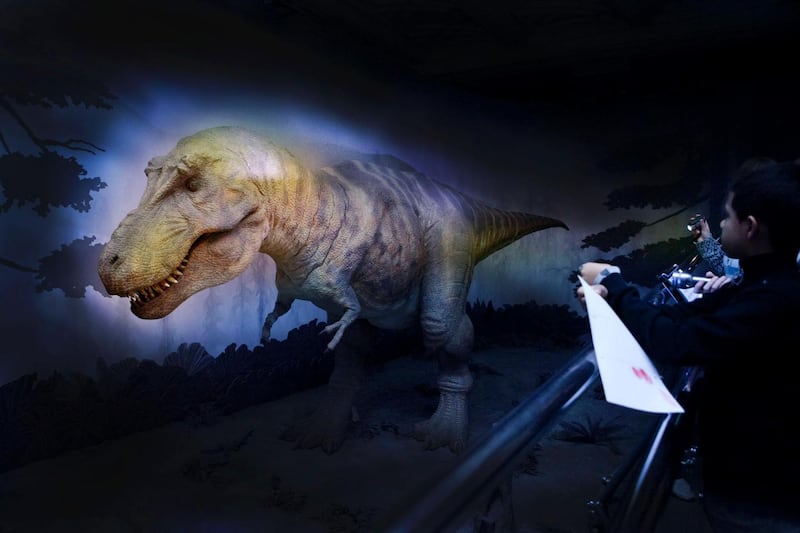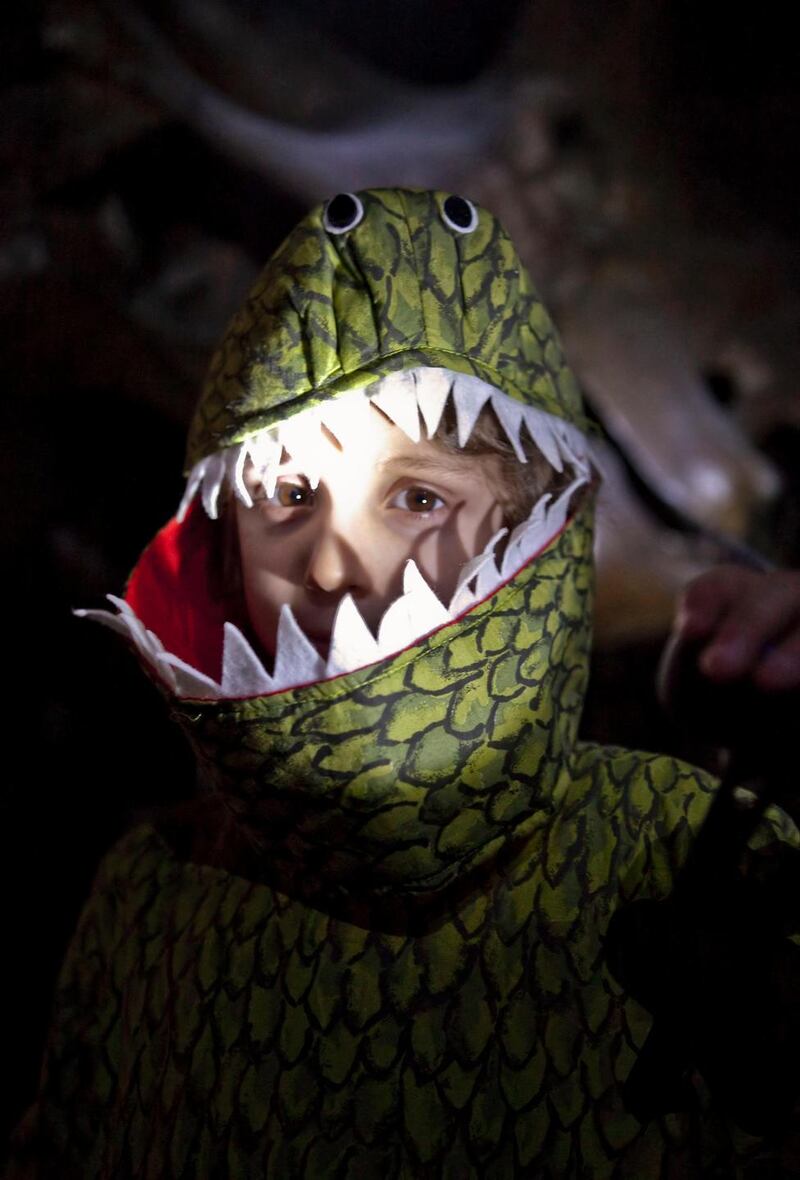If you've ever watched any of the Night at the Museum films and wondered what it might be like to overnight in such hallowed halls, well now you can.
London’s Natural History Museum is one of the world’s best places to explore the planet’s 4.5 billion-year-old story and its Dino Snores programme lets you check in and spend the night.
Don’t expect a pillow menu or room service though. This is a bring-your-own sleeping bag adventure – the emphasis being on experience with a capital E. The drill is you book months in advance and then, on the appointed evening, once the doors close to the public, you join a line of similarly encumbered campers, arms laden with sleeping bags, yoga mats and pillows.
When the clock strikes 6.30pm, you shuffle into the Darwin Centre, where shelves set to the ceiling are filled with glass-jar specimens in liquids of every different hue – it is thrilling and distracts from the administrative part of the check-in.
The crowd is sub-divided, with each group assigned a couple of staff members and taken into the main hall, a cathedral to nature, where orange mats have been laid out on the terrazzo floor as far as the eye can see.

The spectacular neo-Romanesque structure, designed by Alfred Waterhouse in 1881, is ambiently lit using red, green and blue lighting. Dippy the diplodocus who used to be in pole position here has been replaced by Hope, a beautiful 25-metre long blue whale, who is bathed in soft blue light and positioned in dive mode. She died at the age of 10, when commercial whaling was at its zenith and the story goes, was found on the Co Wexford coast in 1891. She was sold to the museum for £200 in 1934.
In bays along both sides are creatures from every period: a modern-day big blue marlin, found by a couple walking their dog in Freshwater East, Pembrokeshire, that has been preserved Damien Hirst-style in its decaying state in a glycerol-filled tank of glycerol, an American mastodon, an elephant-like creature that was wiped out only 13,000 years ago, fossilised trees, a lifelike taxidermied giraffe and another in skeleton-form set side by side to keep each other company.
You’re instructed to find a corner to call your own and discover you will be bedding down beside complete strangers, but there isn’t time to get freaked out as you’re whisked off pronto to the first of the evening’s activities, where we’re all equipped with torches and papers and crayons and told to follow a series of clues within the Dinosaur Gallery to try and discover the name of a certain species.
Fantastically theatrical
This is all done in the dark save for the flashing lights of the other torches of the 40-strong group, all running through a room full of original and resin-cast specimens. The shadowplay is fantastically theatrical, especially when you catch a glimpse of a B-movie-style spider the size of a house crossing a screen – part of a new exhibition, Venom: Killer and Cure. By the time you turn a corner and almost run into an animatronic T-rex in full attack mode, you are your very own scream queen. You also wonder how the place doesn't get completely trashed.

Afterwards, we traipse into one of the auditoria to hear about climate change from a real scientist who talks about her own experiences in the field. She’s blonde twentysomething who relishes taking the kids through practical experiments that compare the levels of insulation in arctic otters, polar bears and human children that had little ones clambering over each other to get involved.
At this point, the adults are completely worn out and dying for bed so there is a collective sigh of relief when we’re told it’s time to retire. But where to get undressed? My son chose to do so under his sleeping bag. Then we toddled into the bathrooms where you brush your teeth and wash your face in the same sinks the public has been using all day long. There isn’t time to give your pearly whites the three-minute attention your dentist may demand – simply because there’s a long line building up behind you. It’s a simple wash and go.

After hours of traipsing around London with sleeping bags and yoga mats, the basic bedding feels feather-filled. About 15 minutes after they wrap up, the lights go down. All that remains is the atmospheric lighting with the skeletons of some of the exhibits casting cool shadows onto the domed ceilings.
The attention to detail is mesmerising. Instead of counting sheep, you can peruse the plant species adorning the terracotta roof tiles or the animal motifs on the support columns.
We’re positioned opposite the mastodon and the shadows of his backbone and hipbone create a perfectly centered arc. Here, even the lighting is on point.
Forthcoming dates for Dino Snores are listed in the what’s on section of the Natural History Museum website - Nhm.co.uk










